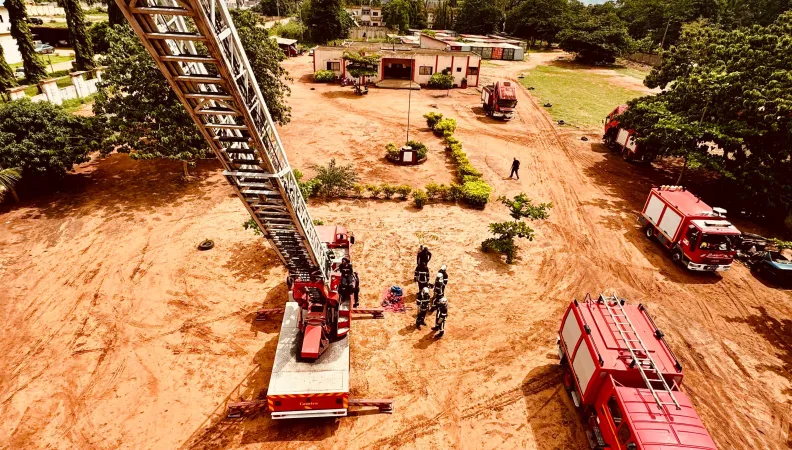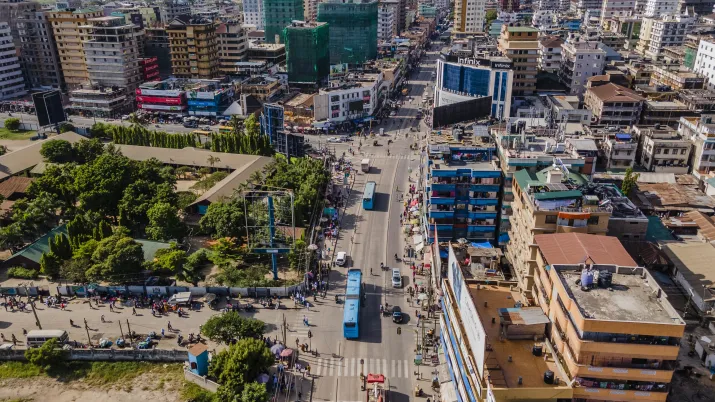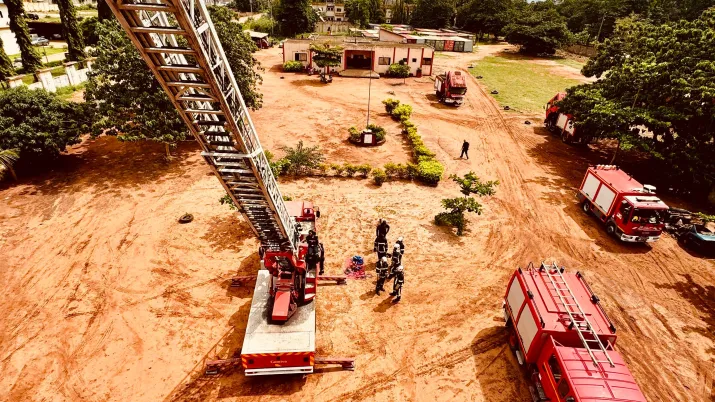Share the page
Reducing disaster risks to limit the human and financial costs
Published on

Held every 13 October, the International Day for Disaster Risk Reduction aims to inform and accustom citizens in terms of the natural and technological risks in their environments. On this occasion, Expertise France takes a look at its action in this field, from Southeast Asia to the Caribbean, and including the Middle East.
While there are a growing number of events related to climate change, the direct costs of “natural” disasters (impact on human lives and property), as well as the indirect costs (such as the loss of productivity, the impact on public health, population displacements, and the disruption of ecosystems), are largely due to the growing vulnerability of systems, institutions and communities.
The sixth IPCC report highlights the direct link between reinforcing disaster prevention and preparedness activities and the degree of mitigation of the impact of natural hazards. Indeed, these activities enable the societies affected to restore viable, liveable and desirable conditions more rapidly.
No country is safe from natural risks, but developing countries are particularly vulnerable, accounting for up to 80% of the human and economic losses caused by these events.
The Sendai Framework for Disaster Risk Reduction 2015-2030 adopted by the United Nations is a strategic document aimed at building resilience to disasters. It is based on four core priorities: (i) understand the risk; (ii) strengthen governance; (iii) invest in risk reduction; and (iv) enhance preparedness. These areas constitute the basis of the initiatives conducted by Expertise France, whose mandate for operations mainly concerns the priorities i, ii and iii.
Understanding disaster risks
Disaster prevention is mainly based on a thorough understanding of the risks. Risk mapping is a fundamental tool for identifying the most vulnerable regions, by integrating various factors such as natural hazards, the exposure of populations and infrastructure, as well as systemic, physical and human vulnerability. This detailed analysis is crucial for the development of appropriate and effective public policies. It requires the active participation of all the relevant stakeholders: public, private, and civil society organisations.
In Jordan, since 2019 and with AFD financing, Expertise France has been contributing to improving the quality of the public service delivered by Jordan Civil Defence to the host and refugee population, residing primarily in Mafraq Governorate. The first phase of this project has increased the institution’s capabilities in terms of the management of natural risks and has contributed to institutionalising the Risk Assessment Office. The objective is to produce risk maps (hazards, exposure, vulnerability) that can serve to support decision-making in the event of crises in Jordan. A second phase has been underway since January 2024 and aims to capitalise on the achievements of the previous phase.
Strengthening the governance of disaster risks to better manage them
This priority highlights the need to strengthen governance mechanisms at all levels (local, national, regional and international) to enable a more effective and integrated management of disaster risks. Strong and collaborative governance not only helps streamline efforts between the various stakeholders, it also increases responsiveness to the challenges posed by disasters. By focusing on integrated approaches and mobilising the available resources, it is possible to develop risk prevention and management systems that protect the most vulnerable communities, and increase their resilience to natural events.
In the Philippines, Expertise France is implementing technical assistance to support the Department of the Interior and Local Government (DILG). The objective is to strengthen the capacity of the DILG to organise training programmes on risk analysis and management, support the development of a national and local strategy to strengthen capabilities for disaster risk reduction (DRR), improve the use of funds dedicated to DDR and climate change, and promote gender-responsive and inclusive approaches in local responses to disasters.
Improving preparedness to ensure an effective intervention and “Build Back Better”
By strengthening local capacities, it is possible to significantly reduce human and material losses. Countries with emergency plans can reduce the economic losses related to disasters by up to 30%. To do so, it is essential to invest in training first responders, in particular civil protection units, to optimise crisis management. At the same time, it is essential to promote a culture of risk within communities on the basis of local knowledge. This requires raising awareness among communities of the risks they face and including them in the preparedness and response processes, in particular by developing community maps and appropriate mechanisms for the dissemination of knowledge.
In Haiti, with AFD financing, the agency is helping to structure and strengthen the capabilities of the Civil Protection services. The support to the State services involves a preliminary identification of the common and specific risks facing the country. These risks will be identified in Departmental Risk Analysis and Coverage Plans (SDACR) and capacity-building support will be provided accordingly. As the community fabric has a very prominent place in Haiti, Expertise France is also supporting civil society organisations by establishing partnerships and providing first aid training to volunteers.
Last publications
Key Priorities to Address Antimicrobial Resistance in Dominican Republic
Published on November 20 2025
Supporting cities and the industrial sector in the face of the global climate challenge
Published on November 12 2025



